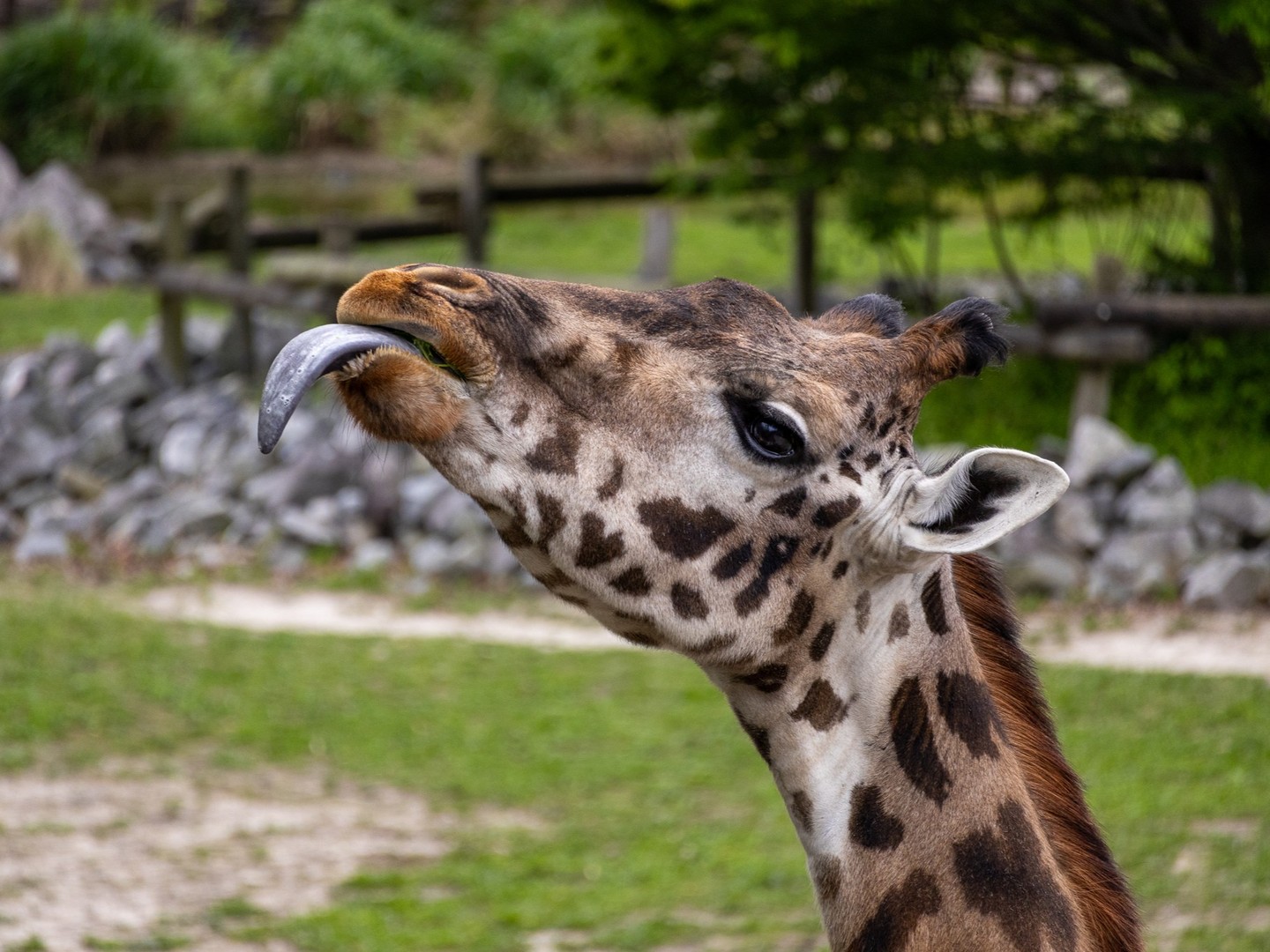- The anatomy and characteristics of Masai giraffes, focusing on Imara and the behavioral traits observed at the zoo.
- Unique adaptations of giraffe physiology, such as their prehensile tongues and long necks, and how these aid in survival.
- The importance of giraffes in ecosystems and their role in the environment.
- Conservation efforts for giraffes and the significance of preserving their habitats.
- The role of zoos in wildlife conservation and the education they provide for visitors about species like Imara the Masai giraffe.
Masai Giraffes: An Overview
Imara the Masai giraffe is a fascinating example of nature’s ingenuity. This particular subspecies, indigenous to East Africa, is recognized by its jagged, vine-like spots that contrast against its tan skin. These spots also serve a purpose beyond aesthetics; they are a part of the giraffe’s thermoregulation system, helping them disperse body heat in the sweltering savannas.
Anatomical Marvels: The Giraffe’s Tongue and Neck
A giraffe’s tongue is an extraordinary tool, measuring between 18 and 20 inches. This prehensile organ allows giraffes to grasp and manipulate foliage with dexterity. The purple-blue hue of the tongue is thought to protect it from sunburn as they forage. In tandem with their tongues, giraffes possess necks that can reach up to six feet long. Despite their size, giraffes have the same number of vertebrae in their necks as humans, which are elongated to support their iconic stature. This adaptation allows them access to food that other herbivores can only dream of reaching, such as the leaves of the acacia tree.
Ecosystem Engineers
Giraffes like Imara play a crucial role in their ecosystems. As browsers, they help maintain the balance of plant species, and their munching shapes the habitat structure. The giraffes’ diet allows more sunlight to penetrate the ground level, promoting growth in smaller plant species. This behavior aids in maintaining biodiversity.
Conservation Challenges and Efforts
Giraffes face numerous threats, including habitat loss, poaching, and climate change. The significance of conserving these animals extends beyond their intrinsic value; it involves preserving the ecosystems where they reside. Conservation efforts focus on habitat protection and anti-poaching measures. Organizations are working tirelessly to reverse the decline in giraffe populations through initiatives like habitat restoration and community engagement.
Zoos: Guardians of Wildlife Conservation
Modern zoos play an indispensable role in conservation, offering safe havens for species like Imara. At the zoo, giraffes serve as ambassadors for conservation efforts, educating the public about the challenges these animals face in the wild. Zoos like Imara’s offer breeding programs as a genetic reservoir for future re-introduction into native habitats.
Engagement and Education
Visitors to the zoo can witness the remarkable behaviors of giraffes up close. Observing Imara using her lengthy tongue to pull leaves off branches not only captivates but also informs. Interactive exhibits and educational programs enhance understanding and inspire actions supporting wildlife sustainability. Zoos are more than entertainment; they are vital educational platforms promoting biodiversity and conservation.
In summary, Imara the Masai giraffe embodies the exceptional traits and ecological importance of her species. Understanding and valuing these majestic creatures urge us to act decisively to protect them and their habitats. Through dedicated conservation efforts and educational outreach, we can ensure that future generations appreciate the grandeur of giraffes. Each visit to the zoo provides an opportunity to learn and contribute to the global mission of wildlife preservation.
*****
Source Description
Happy from Imara the Masai Giraffe!
A giraffe’s tongue measures between 18 and 20 inches long? 👅 Their tongues are also prehensile, meaning they can grasp branches and pull the leaves off trees!
Don’t forget to say hello to (or stick your tongue out 😜 at) our tower of giraffes on your next visit!


